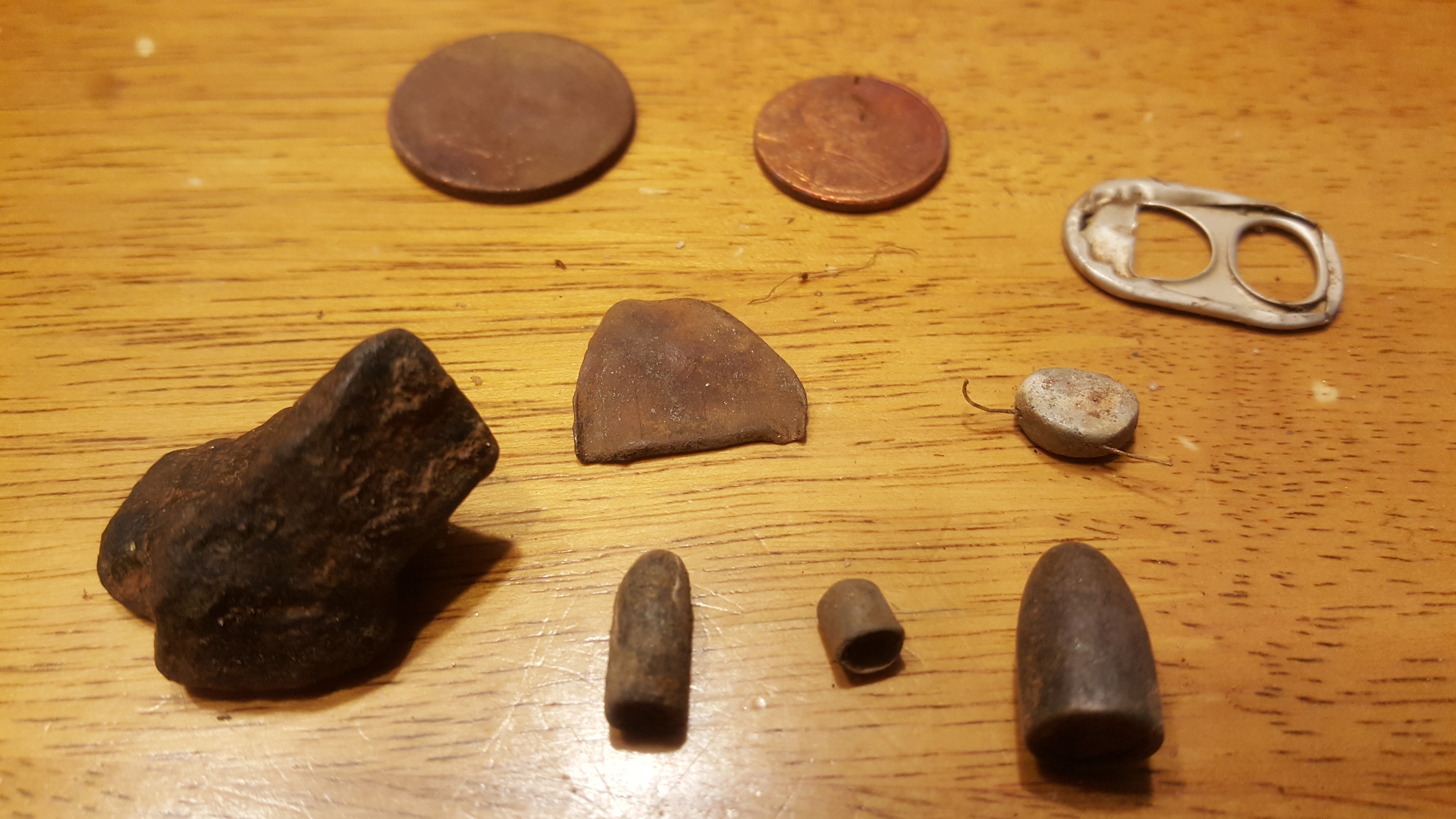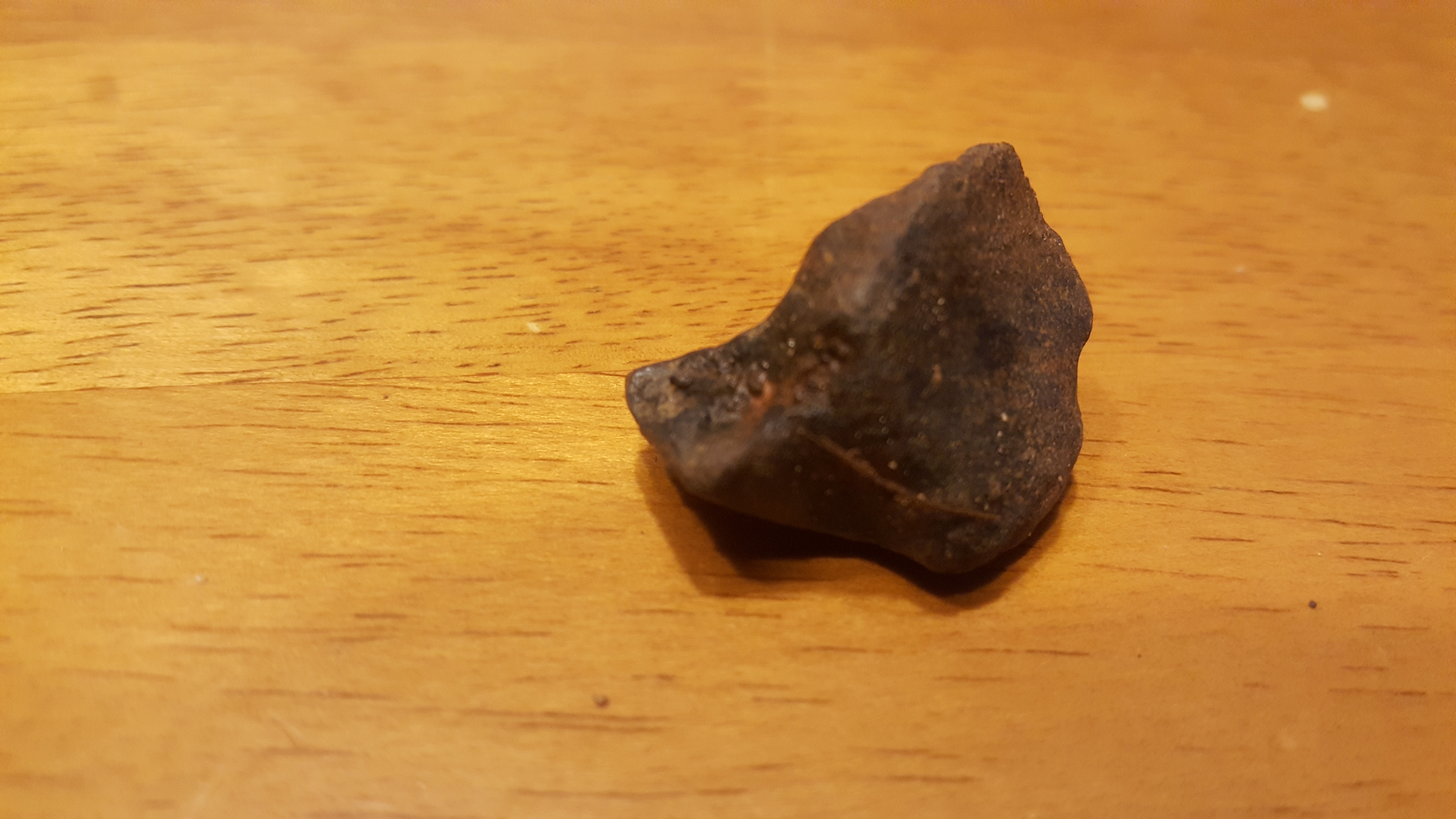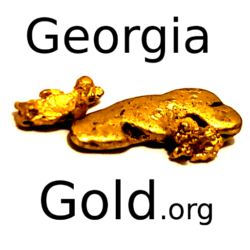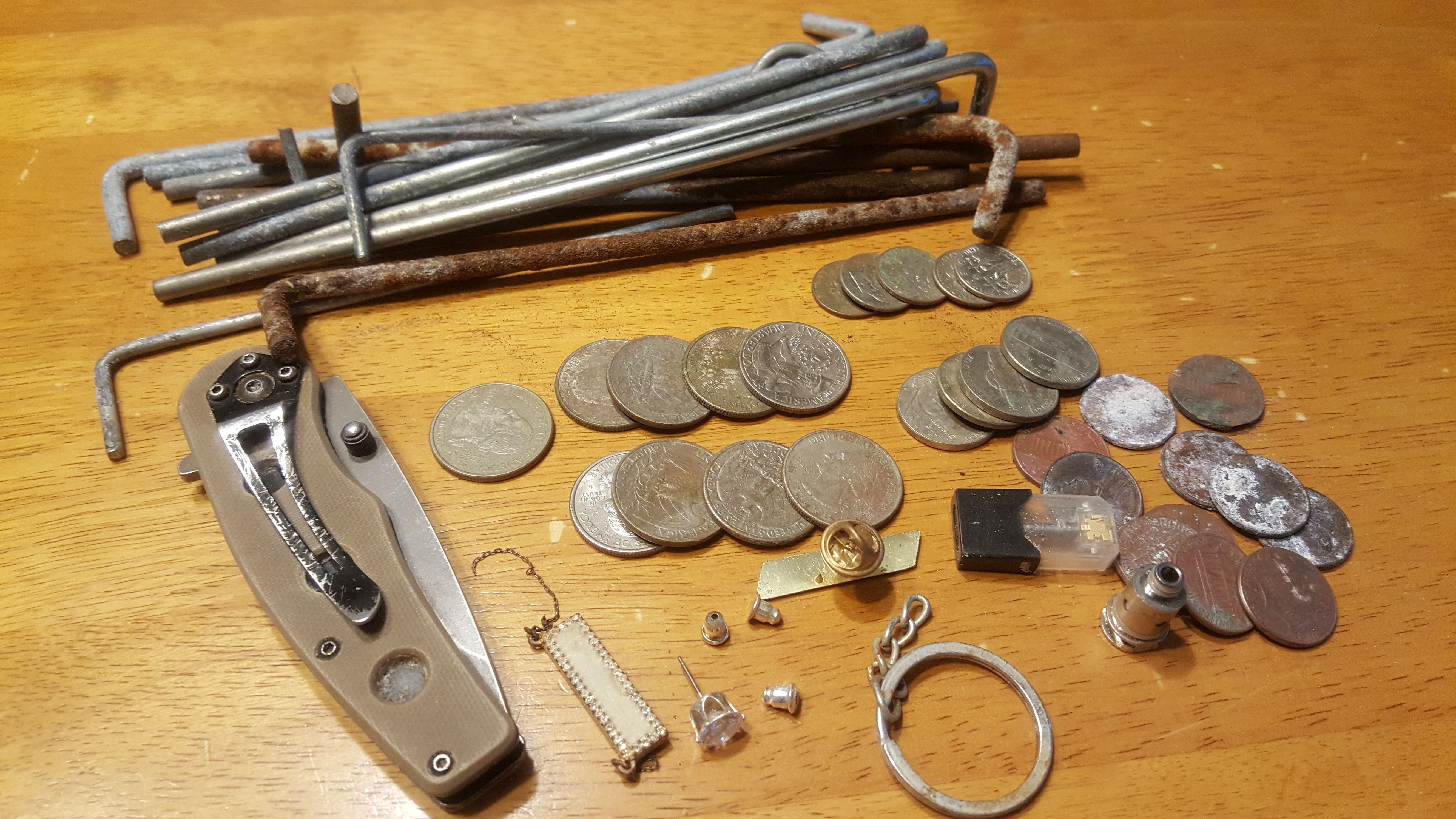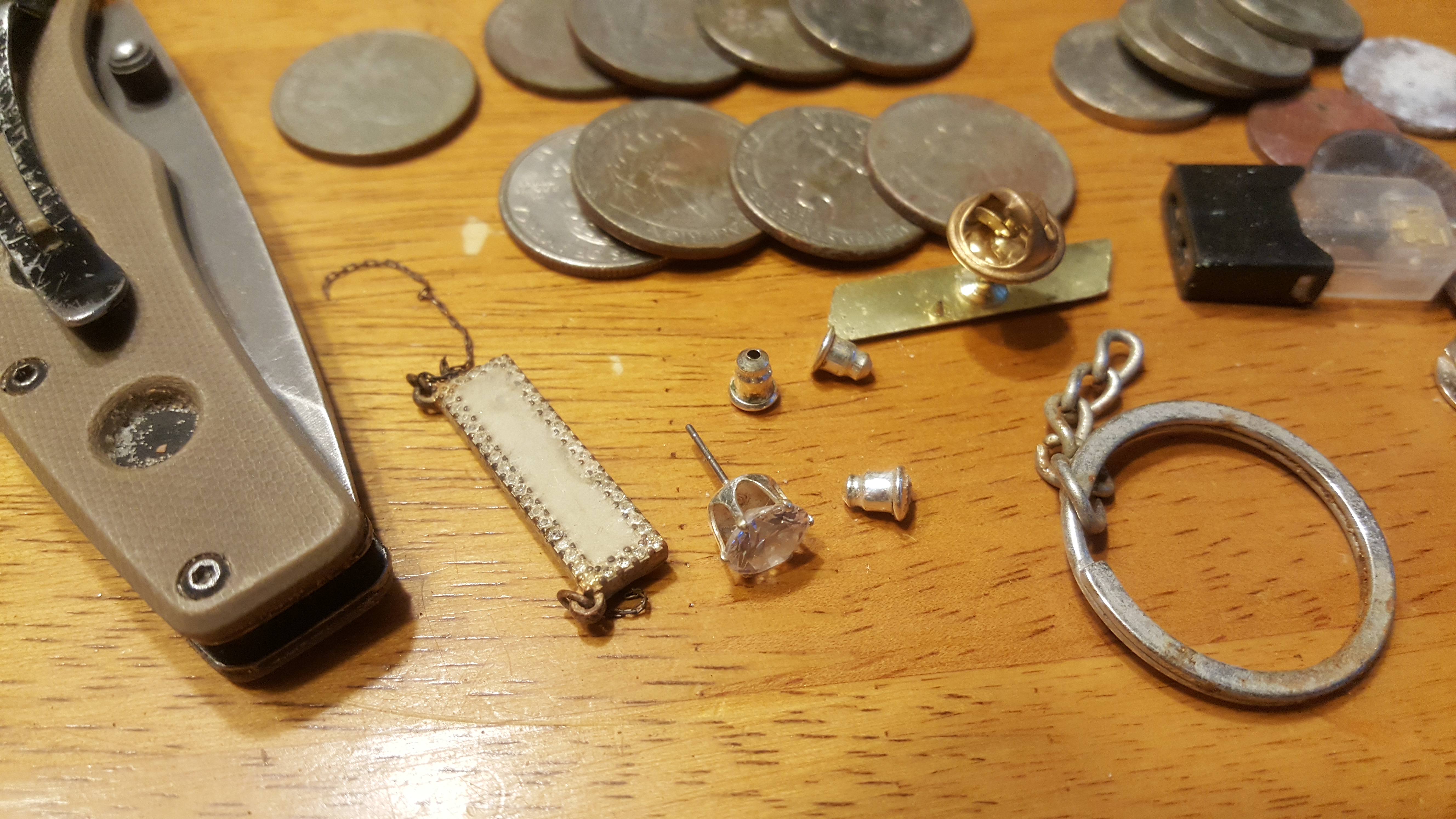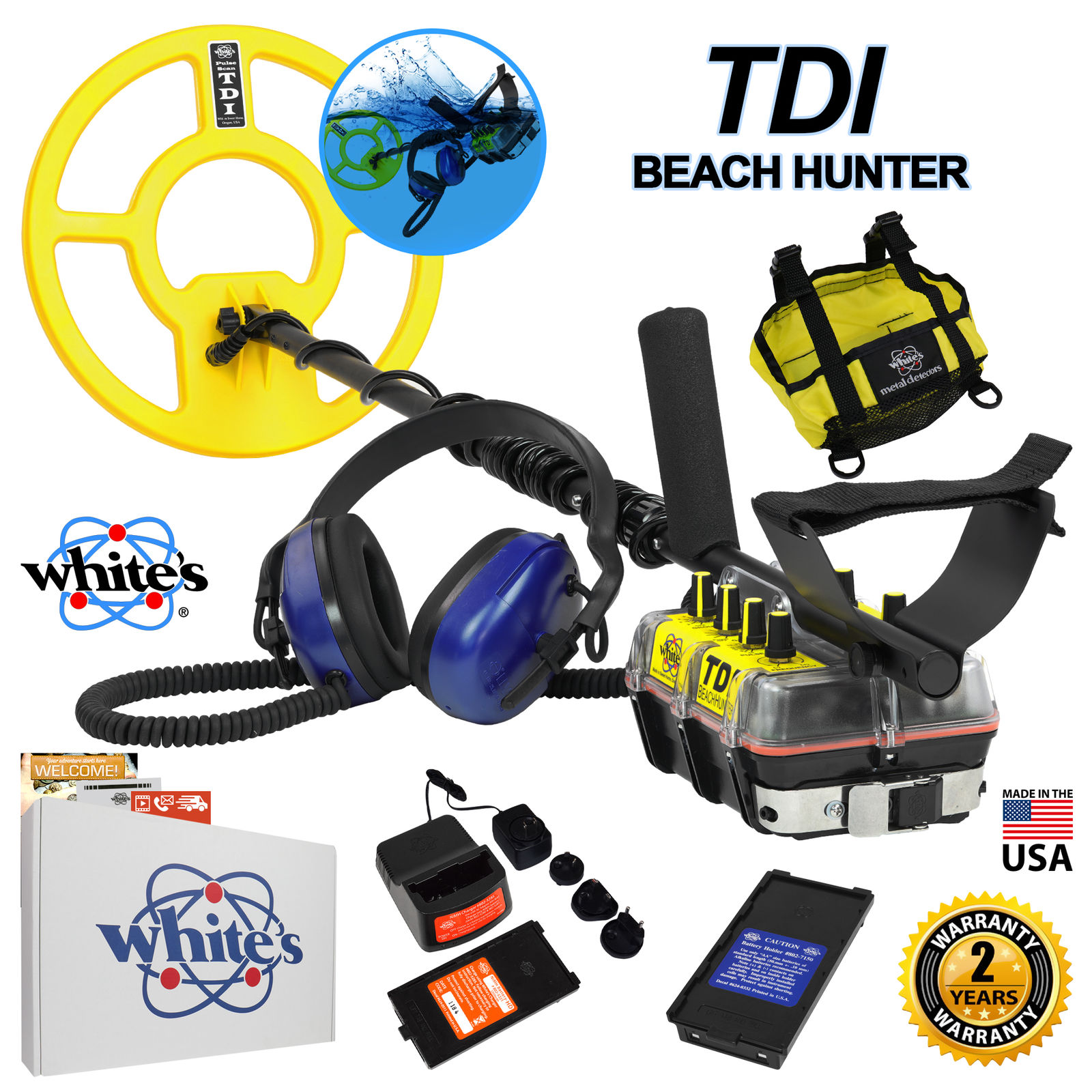Wow, I had a blast this morning. I went metal detecting in a creek in North Georgia called Settingdown creek. I was very unprepared for the adventure.
I brought with me my metal detector, a long handle sand scoop and my finds pouch. The first target was a bullet or percussion cap, it’s really small. The sand scoop was worthless, the site was covered in bed rock and there was nothing to scoop!
The next target was identified by my GTI 2500 as a coin and target imaging said it was b-size or coin sized, but unfortunately I never found it. The target was located in a deep crevice in the bedrock and multiple rocks were stuck between me and the target. I didn’t have the proper equipment to find it. I really needed my gold prospecting equipment called a crevice tool that normally used to clean out crevices to find gold nuggets.
The next couple of targets were bullets, a lead weight and a pulltab. I was real excited on the pulltab signal because it had all the characteristics of gold ring. I also identified another coin signal in a different crevice, but again I never recovered it because I just couldn’t remove the rocks that were jammed in the crevice preventing me from retrieving it.
At the end of the hunt, I moved to some deep sand in a area of the creek where the water was moving real slow. The long handle sand scoop worked great here. I found a real deep quarter, a zinc penny, a piece of scrap metal and my first meteorite! It might be a meteorite, but it’s probably just a piece of lode stone.
